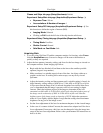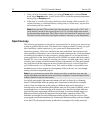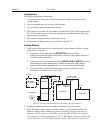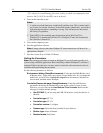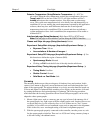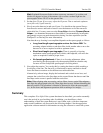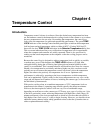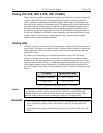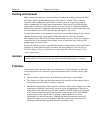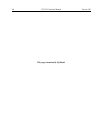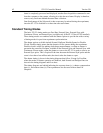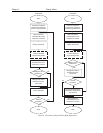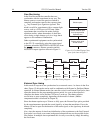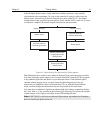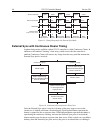
Chapter 4 Temperature Control 39
Cooling and Vacuum
Many cameras incorporate a vacuum chamber for enhanced cooling performance. With
time, there can be a gradual deterioration of the camera’s vacuum. This is turn may
eventually affect temperature performance to where it may no longer be possible to
achieve temperature lock at the lowest temperatures. In the kind of low-light imaging
applications for which cooled CCD cameras are so well suited, it is highly desirable to
maintain the controller’s temperature performance because the lower the temperature, the
lower the thermal noise will be and the better the signal-to-noise ratio.
Vacuum deterioration occurs primarily as a result of outgassing occurring in the vacuum
chamber. Because outgassing normally diminishes with time, the rate of vacuum
deterioration in new cameras will be faster than in older ones. As a result, for example, a
camera that has to be repumped after perhaps a year of operation, may not have to be
pumped again for several years.
In any case, should you notice a gradual deterioration in temperature control performance
indicative of vacuum deterioration, the camera can be repumped. Contact the factory
Technical Support Dept. for information on refreshing the vacuum. See page 114 for
contact information.
The CCD array is subject to damage from condensation if exposed to atmospheric
moisture when cold. For this reason, the camera should be kept properly evacuated.
Problems
If temperature lock cannot be achieved or maintained, it will be necessary to find and
correct the problem to be assured of good measurement results. Possible causes could
include:
• The vacuum has deteriorated as described above and needs to be refreshed.
• The connectors of the cable that interconnects the controller and the camera need to
be secured (slide-lock latch or screws as required).
• The internal temperature of the camera has gotten too high, such as might occur if the
operating environment is particularly warm or if you are attempting to operate at a
temperature colder than the specified limit. Both TE and RTE cameras are equipped
with a thermal-protection switch that shuts the cooler circuits down if the internal
temperature exceeds a preset limit. Typically, camera operation is restored
automatically in about ten minutes. Although the thermo-protection switch will
protect the camera, you are nevertheless advised to power down and correct the
operating conditions that caused the thermal-overload to occur.
WARNING



